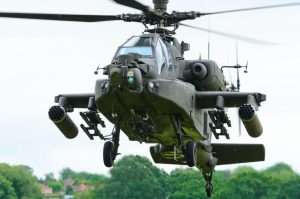When you think about global military power, the United States often comes to mind. But how large is the US military, really? People frequently ask this. Its size is important because it helps us see how much power it wields worldwide.
Global impact and a strong commitment are just as important as the numbers. So you don’t need a military background to understand, we’ll be referencing research and official reports. It will all make sense.
Ready to jump in? Here’s the guide.
- The Scope of US Military Personnel
- Historical Context: How Large is the US Military At Its Peak?
- Analyzing US Military Branches In Depth
- Age, Demographics, and the US Military’s Future
- How large is the US military budget
- US Military’s Global Impact
- Conclusion
The Scope of US Military Personnel
In 2025, the US military will have about 1.32 million active-duty personnel. Many different people are involved, including everyone across the board. Country comes first for these people; they stand ready to help.
The US military has the third largest active force. According to Statista, only India, with 1.4 million, and China, with 2.0 million, have more active-duty personnel.
Here’s a breakdown of personnel across the different branches, highlighting the diversity of roles within the US armed forces:
| Military Branch | Approx. Active Duty Personnel (2025) |
|---|---|
| Army | 450,000 |
| Navy | 332,000 |
| Air Force | 316,000 |
| Marine Corps | 173,000 |
| Space Force | 9,450 |
| Coast Guard | 40,600 |
This table shows the personnel distribution as of early 2025. Beyond active-duty members, the military includes reservists, the National Guard, and civilian employees. The grand total goes above 2.8 million people.
This workforce has steadily been decreasing. Future military plans are changing because of this trend.
Historical Context: How Large is the US Military At Its Peak?
Reviewing the past shows how military sizes have changed. At its largest, during World War II in 1945, the US military had a stunning 12.2 million active-duty personnel.
By the Vietnam War era, in 1968, the number had dropped to 3.5 million active members. Today’s modern military is notably smaller.
The reduction is due to fewer applicants, more specialized positions, and evolving world situations.
Recent Changes Affecting Size
Recruitment is now a more prominent focus. In 2023, the military fell short of its recruitment goals by an astonishing 41,000 personnel.
Over the past three years, the military has lost 64,000 personnel. The number of applicants is also down, which presents a real problem.
Lots of things make it shrink. Better career choices exist, and fewer young people trust organizations.
Analyzing US Military Branches In Depth
Each branch faces distinct trends and difficulties. Let’s start with the US Army. The Army aims to have land superiority in all US military operations.
The nation’s primary defense force is them. It often gets sent to international areas of conflict.
It’s no surprise that it is the largest branch of the US military. The Army has almost half a million active duty personnel and many more National Guard members.
Understanding the Roles within the US Air Force
The US Air Force aims for air domination. Thanks to its international network, it achieves national goals. This branch employs around 320,000 active duty personnel and 69,000 additional staff.
This comes to 5,200 active aircraft and over 13,000 pilots. The numbers don’t lie; this branch of the military is vital.
Around 1,500 of these aircraft are fighters. These combinations support a range of capabilities and constant air control.
Exploring the Might of the US Navy
With approximately 335,000 active Navy sailors, the Navy slightly surpasses the Air Force. It can reach almost anywhere with an ocean and is vital to be effective along coastal spots.
This ability is boosted by its being the world’s largest navy by tonnage. Impressively, it carries eleven aircraft carriers, nine helicopter carriers, 75 destroyers, and more war vehicles.
Submarines are part of the Navy, which improves their ability to operate underwater. These vessels significantly improve their underwater performance.
Breaking Down the US Marine Corps
The Marine Corps is a flexible unit within the US military that blends infantry, naval, and air forces. Its primary function is leading attacks from sea to shore.
With about 180,000 active people, its range of gear sets it apart. The focus has adjusted lately because China is now recognized as an economic rival.
The force design project wants to reduce costs a lot. Changes are happening to keep Marines on the cutting edge with more modern tactics and cost cutting.
Meet the Space Force
The US Space Force started in 2019. This system keeps our Earth’s orbiting satellites safe.
America’s technological advantage is clear; this small unit is proof. It’s a powerful demonstration. Right now, the US operates around 250 of the roughly 500 military satellites in the world.
This team has around 8,941 active duty personnel. Small but mighty, it’s a key component in our Earth monitoring system, constantly collecting vital data. Think of it as a super-powered, miniature spy, diligently reporting back to us.
Inside the US Coast Guard
The Coast Guard’s numbers, about 40,400, aren’t that high, but this belies its true ability. Maritime safety and emergency response are central to its mission; it’s the guardians of America’s coast. Think of it as the first responders of the sea.
According to dhs.gov, they are under the Department of Homeland Security during peaceful times. In wartime, they are reassigned to the Defense Department.
Defense depends on their work. American coastlines are kept safe by their work.
Age, Demographics, and the US Military’s Future
Significant shifts in the military’s makeup will occur in 2025. These shifts impact age, representation, and enlistment. Data from Usni.org reveals the average age of active-duty personnel in 2025 at 28.5.
The mix of the military population mirrors more remarkable social change. Racial minorities make up about 31.2% of service personnel, an above-average rate that shows our commitment to diversity.
Females are growing among active duty forces, at 17.5% of all. Though combat roles are still small, many leadership and care positions continue to grow.

How large is the US military budget
Military expenses can be very mind-boggling. When considering the defense budget alone, one can start to understand, “How large is the US military?”
The United States military accounts for 40% of the entire world’s military budget. The US Military has the largest budget in the entire world.
In dollars, we’re talking $900 billion in defense spending. While this is the highest in the world, it’s a smaller chunk of US GDP (3.4%) compared to other times in history.
This massive injection of federal funds covers personnel costs, military base operations, and research. This money impacts countless lives and projects across the country.
A considerable portion goes to the Department of Veterans Affairs, supporting veterans.
US Military’s Global Impact
The presence and impact that the US military has around the world go along with answering the question, “How large is the US military?”
The DoD manages over 4,790 military sites worldwide. Its dedication to global safety and effort to create more international security is clearly demonstrated here. This presence is a testament to that commitment.
The Indo-Pacific region hosts over 375,000 US military personnel across at least 66 bases. Imagine the scale: this impacts 38 countries. That’s a lot.
These places are vital; their complicated work needs DoD support.
American troops are also deeply involved. Stories with all the details. Global security issues are complex. We’re developing interactive tools to make them easier to understand. These tools will help people of all ages learn about this important subject.
Department of Defense support for global events is shown in news stories with photo collections from various sources.
Conclusion
The US armed forces are complex. With over 1.3 million active duty personnel, understanding how large the US military is is fascinating.
Think about how big it is worldwide. Seeing the big picture makes the plan stronger—the Pentagon. National defense and foreign policy both depend heavily on it.
You can now compare this massive number to many millions in India’s military. Now, there’s more context to consider when discussing the world military stage.
